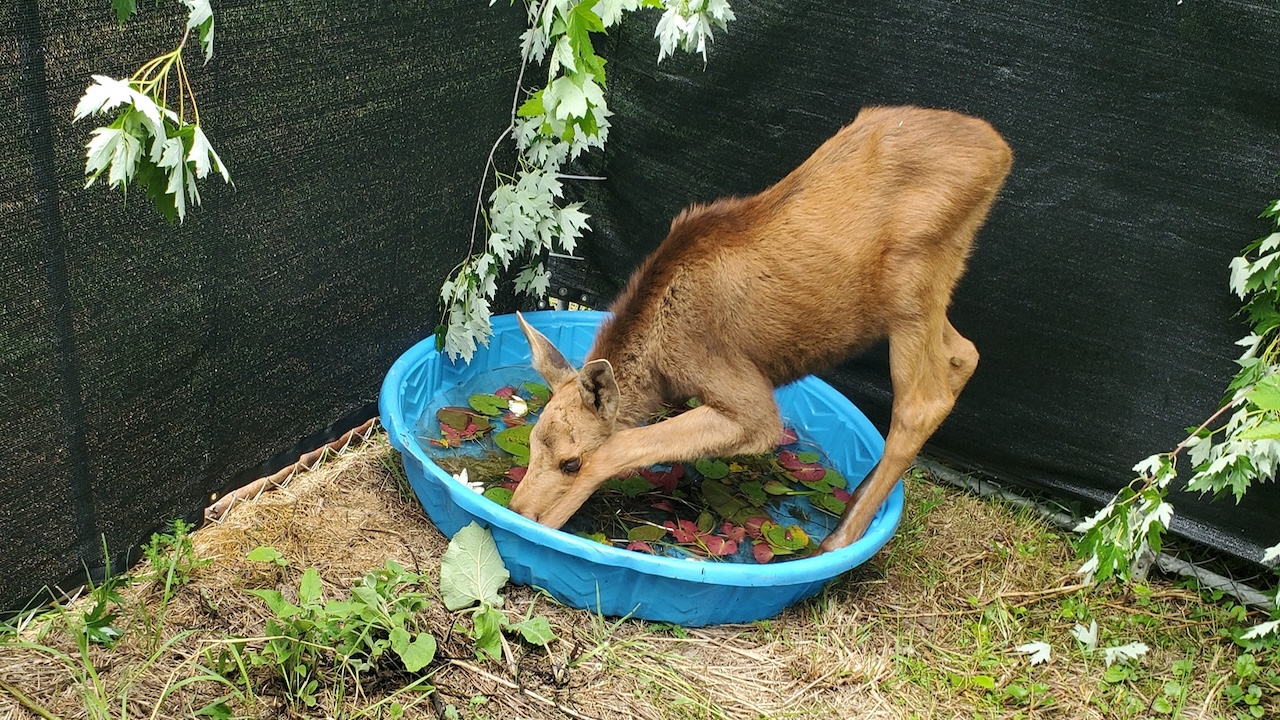A blind baby moose rescued near Ottawa finds new home at Toronto Zoo
Injured and blind baby moose is moving into Toronto Zoo after wildlife rescue
Toronto Zoo to welcome rescued two-month-old blind baby moose
Rescued blind baby moose has officially found his forever home at the Toronto Zoo
The Toronto Zoo will soon welcome a special new resident: a two-month-old blind baby moose! The calf, named Cedar, was rescued earlier this month by 269 Animal Rescue on a rural road in Hawkesbury, Ont., near Ottawa.
Volunteers took Cedar to Holly’s Haven Wildlife Rescue, where he spent the past three weeks receiving veterinary care.
“This moose calf was blind and wandering on its own with no sight of a mother,” Lynne Rowe, the rescue organization’s director of operations, said in an interview with The Canadian Press.
Rowe added that rescued moose are usually transferred to the Aspen Valley Wildlife Sanctuary in Rosseau, Ont. (such as the case with Thunder, a male calf from the Thunder Bay area who arrived in spring 2024), but the facility was at capacity.
She then contacted the Toronto Zoo, which thankfully agreed to take Cedar in after the Ontario Ministry of Natural Resources approved the transfer.
“Moose cannot be taken out of the wild to be put in a zoo,” Rowe said. In Ontario, under the Fish and Wildlife Conservation Act, it’s illegal to keep moose in captivity unless they’re deemed unfit to survive in the wild. So in most cases, they’re either euthanized or eventually released back into the wild.
A veterinary ophthalmologist came by to assess his eyes, and Holly’s Haven set up a makeshift moose enclosure filled with foraged food collected by volunteers (lily pads, according to the rescue organization, have been especially popular. Ironically, Cedar was not a fan of cedar branches!). A veterinarian also came by to assess the calf’s leg, as his hind leg joint was injured.
It seems like Cedar’s injury has since improved — a video posted to Holly’s Haven’s Facebook page shows him happily running around his enclosure. According to the ophthalmologist, Cedar’s best prognosis is that partial vision will return to his right eye only.
There’s a GoFundMe currently running to support the expansion of Holly’s Haven — Rowe has noted that the rescue organization is “grossly limited” in the number of animals they can care for by the amount of donations they can rely on for ongoing costs. She shared that it’s mostly volunteers that allow the organization to do the work to care for rescues like Cedar.
Toronto Zoo CEO Dolf DeJong told The Canadian Press that the zoo has a suitable enclosure and is ready to provide long-term care. While the ideal scenario would have been for Cedar to be released back into the wild, DeJong said that his condition makes that impossible.
“Our veterinarians will connect with their veterinarians now so we can get a full understanding of Cedar’s condition and make sure we’re able to provide that support he needs for him to thrive,” DeJong said.
This is a win for both the Zoo and Cedar: the calf will receive a permanent home while offering visitors the chance to learn more about moose and their unique adaptations!
Cedar will be the Toronto Zoo’s only moose — their last remaining moose, Lily, was euthanized in late 2024 after her health deteriorated, shortly after her sister, Trilly, passed away.
There’s no confirmed date yet for Cedar’s arrival at the Zoo, but we know that he’ll remain at Holly’s Haven until cleared by veterinarians to travel.


